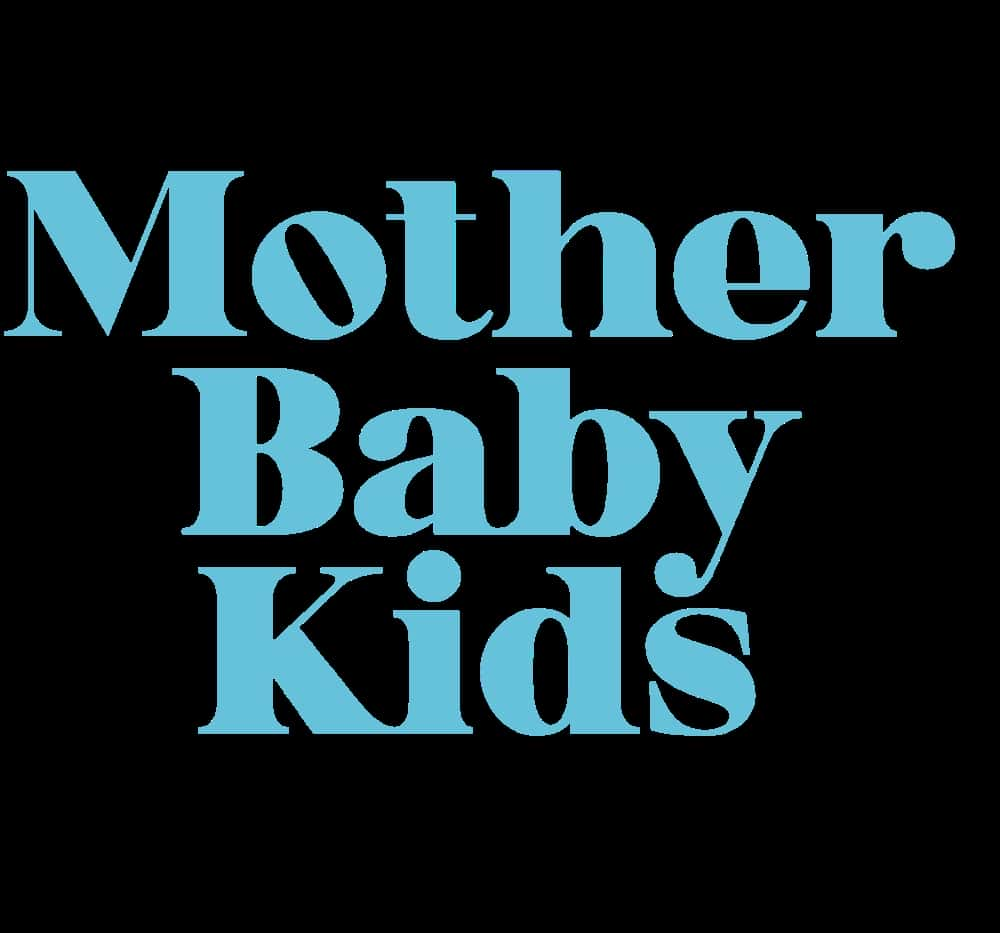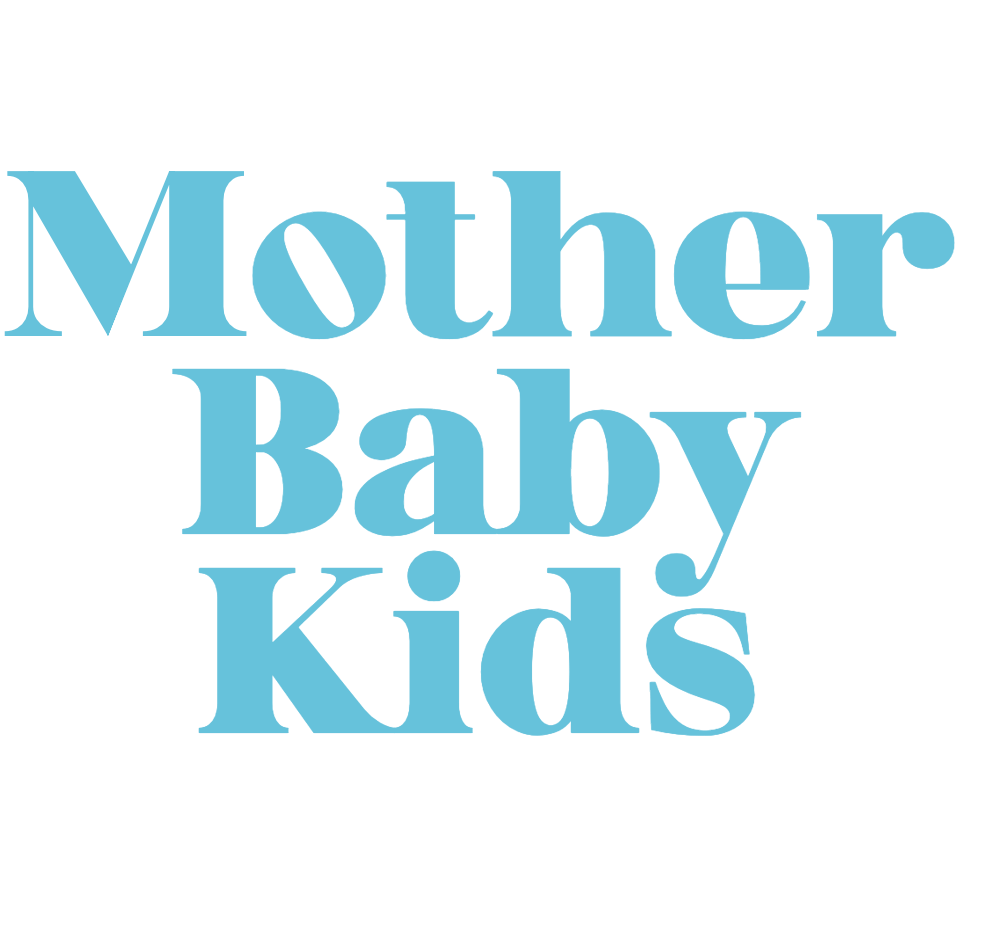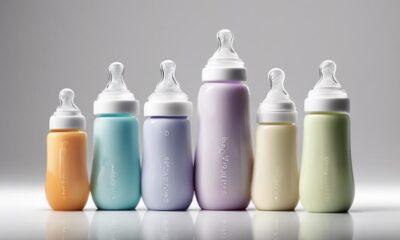Breastfeeding/Formula Feeding
Safely Using Zofran While Breastfeeding: A How-To Guide
Wondering how to navigate Zofran while breastfeeding? Dive into essential guidelines for managing postpartum nausea and ensuring your baby's health.

Managing Zofran while breastfeeding can be like walking a tightrope without a safety net. But don’t worry, there are important guidelines to follow to keep you and your baby healthy.
Understanding the nuances of Zofran use during breastfeeding is critical, and our how-to guide will shed light on key aspects to help you confidently handle postpartum nausea while safeguarding your baby's well-being.
Key Takeaways
- Consult healthcare provider before using Zofran while breastfeeding.
- Monitor infant for potential side effects.
- Zofran is safe for breastfeeding per AAP.
- Ensure ongoing observation and care for both mother and baby.
Zofran Safety Considerations for Breastfeeding
When considering the safety of using Zofran while breastfeeding, it's important to review its minimal transfer to breast milk and the absence of reported adverse effects on breastfed infants immediately postpartum. This reassurance comes from studies that have shown Zofran to be safe for nursing mothers, with no significant impact on breastfeeding initiation.
Healthcare providers often recommend this medication for its effectiveness in managing nausea and vomiting, common postpartum symptoms. Ondansetron, the active ingredient in Zofran, is deemed safe for infants as young as one month old, further supporting its use during breastfeeding.
It's essential for nursing mothers to consult their healthcare provider before taking Zofran to guarantee it's the right choice for them and their infants. While using Zofran, monitoring infants for any potential side effects is recommended to safeguard their well-being.
Trusting your healthcare provider's guidance can help alleviate any concerns regarding the safety of Zofran while breastfeeding.
Recommended Dosage of Zofran for Nursing Mothers

For nursing mothers, the recommended dosage of Zofran typically ranges from 4 to 8 micrograms intravenously. Healthcare providers may adjust this dosage based on individual needs and response to the medication. Zofran can be used on an as-needed basis for managing postpartum nausea while breastfeeding. It is important for nursing mothers to be closely monitored for both side effects and effectiveness when using Zofran. Consulting with a healthcare provider is essential to determine the appropriate Zofran dosage for safe use during breastfeeding.
| Dosage | Administration |
|---|---|
| 4 mcg | Intravenous |
| 6 mcg | Intravenous |
| 8 mcg | Intravenous |
This table outlines the typical dosages of Zofran for nursing mothers. Remember, always follow the guidance of your healthcare provider when using Zofran while breastfeeding to guarantee the safety and well-being of both you and your baby.
Potential Side Effects of Zofran on Breastfed Babies
Moving from the discussion on Zofran dosage for nursing mothers, it's important to address the potential side effects of Zofran on breastfed babies for a thorough understanding of its safety during breastfeeding. While limited research indicates no reported side effects on breastfed babies immediately postpartum or in studies, studies suggest that Zofran is considered safe for infants from one month old. No adverse effects on breastfed infants have been reported in women who received ondansetron postpartum. However, published information on ondansetron levels in breastfed infants isn't widely available. It's worth noting that a pharmacokinetic study showed no negative effects on breastfed infants of women who received ondansetron postpartum.
- Limited research indicates no reported side effects on breastfed babies immediately postpartum or in studies.
- Studies suggest Zofran is considered safe for infants from one month old.
- No adverse effects on breastfed infants have been reported in women who received ondansetron postpartum.
- Published information on ondansetron levels in breastfed infants isn't widely available.
Interactions Between Zofran and Breastfeeding

Limited research suggests minimal transfer of Zofran to breast milk, making it deemed safe for breastfeeding mothers. This compatibility is further supported by the American Academy of Pediatrics, which highlights the absence of reported negative effects on breastfed infants.
While immediate postpartum studies haven't shown adverse outcomes, healthcare providers advise monitoring infants for any potential side effects when mothers are using Zofran. It's important for breastfeeding mothers to consult their healthcare provider for personalized guidance on the safe use of Zofran to guarantee the well-being of both the mother and the baby.
Tips for Monitoring Zofran's Impact on Breastfeeding
When using Zofran while breastfeeding, it's important to actively monitor your baby for any changes in behavior or health. Keeping a close eye on how your little one is doing can help you catch any potential issues early on.
Here are some tips for monitoring Zofran's impact on breastfeeding:
- Observe Your Baby's Behavior: Look out for any unusual fussiness, changes in feeding patterns, or other signs that may indicate a reaction to Zofran.
- Track Your Milk Production: Keep an eye on your milk supply to make sure it remains steady and that your baby is getting enough nourishment.
- Watch for Side Effects: Be vigilant for any side effects that your baby may be experiencing while you're taking Zofran.
- Consult Your Healthcare Provider: If you have any concerns about how Zofran is affecting your breastfeeding experience, don't hesitate to reach out to your healthcare provider for guidance.
Staying informed and proactive in monitoring your baby's well-being is key to ensuring a safe and successful breastfeeding journey while using Zofran.
Frequently Asked Questions
Is It Safe to Breastfeed After Taking Zofran?
Yes, it is safe to breastfeed after taking Zofran. Research supports its compatibility with breastfeeding, with minimal transfer to breast milk and no reported adverse effects on infants. It's important to monitor for any potential side effects in the baby.
What Anti Nausea Medication Is Safe While Breastfeeding?
When breastfeeding, we found Zofran to be a safe choice for managing nausea. It allowed us to care for our little one without worry. Consult your healthcare provider for personalized advice on using Zofran while breastfeeding.
How Do I Get Rid of Nausea While Breastfeeding?
We manage breastfeeding nausea by trying ginger or B6, discussing meds with a doctor, considering lifestyle changes, monitoring hydration and diet, and watching infant health. It's important to be informed and proactive in addressing these symptoms.
Is It OK to Take Zofran Daily While Pregnant?
We find that taking Zofran daily while pregnant can be safe when prescribed by a healthcare provider. Its benefits in managing severe nausea may outweigh risks. Consulting a professional for proper dosage and duration is essential.
Conclusion
To sum up, safely using Zofran while breastfeeding requires careful consideration and monitoring. By following the recommended guidelines, consulting healthcare providers, and staying informed, mothers can effectively manage postpartum nausea without compromising their baby's health.
Remember, knowledge is power when it comes to balancing medication and breastfeeding. Stay vigilant like a watchful hawk to guarantee both you and your baby are safe and healthy.
With a rich background in writing and a keen interest in child development, she specializes in creating insightful, compassionate content that speaks directly to parents’ concerns and aspirations. Margaret believes in the power of shared experiences to bring comfort and confidence to parents everywhere.
Breastfeeding/Formula Feeding
Elimination Diet for Breastfeeding: A Comprehensive Guide
Solve the mystery of infant food sensitivities with an elimination diet for breastfeeding mothers – could this be the key to your baby's health?

As we navigate the world of breastfeeding, the challenge of addressing infants' food sensitivities can be overwhelming.
The idea of altering our diet to support our little ones' well-being may seem intimidating at first, but what if a few dietary adjustments could make a significant difference?
Let's explore how an elimination diet tailored for breastfeeding mothers could potentially reveal answers to our infants' health concerns, paving the way for a healthier journey ahead.
Key Takeaways
- Maintain a detailed food diary to track intake and potential triggers for breastfeeding issues.
- Total elimination of common allergens like dairy, soy, nuts, and wheat may be necessary.
- Reintroduce eliminated foods gradually to identify specific triggers for infant reactions.
- Consult a healthcare provider or a registered dietitian for guidance on elimination and reintroduction processes.
Identifying Potential Triggers
To identify potential triggers for infant allergies while breastfeeding, start by maintaining a detailed food diary of your daily intake. This diary should include all foods, beverages, and snacks consumed throughout the day. Common allergens that breastfeeding mothers may need to eliminate from their diets include dairy, soy, nuts, eggs, and wheat. By keeping track of what you eat, you can better pinpoint which foods might be causing allergic reactions in your baby. It's essential to be thorough and honest in documenting everything you consume, as even small amounts of allergenic foods can affect your baby through breast milk.
Elimination diets involve removing specific foods from your diet to see if your baby's symptoms improve. Once you have identified potential trigger foods through your food diary, consult with a healthcare provider to confirm and discuss a plan for elimination. Remember to wait at least 2 weeks after eliminating a food group to observe any changes in your baby's reactions. The Academy of Breastfeeding Medicine recommends reintroducing eliminated foods one at a time to accurately pinpoint trigger foods. By diligently tracking your food intake and working closely with a healthcare provider, you can effectively identify and manage potential allergens while breastfeeding.
Types of Elimination Diets

When starting on an elimination diet while nursing, it's important to comprehend the various types available to determine the best approach for identifying potential allergens affecting your baby.
Two common types of elimination diets are the total elimination diet and the gradual reintroduction diet. The total elimination diet involves removing all suspected allergenic foods simultaneously from your diet. This approach aims to quickly clear your system of potential allergens that could be passed through breast milk to your baby. Once the allergenic foods are eliminated, they're then reintroduced one at a time to pinpoint any allergic reactions in your baby.
It's critical to remember that proteins from foods consumed can show up in breast milk within a few hours, affecting your baby's health. Symptoms of allergic reactions in infants may manifest as hives, rashes, vomiting, or digestive issues.
Keeping a detailed food diary, noting any allergic reactions in your baby, and seeking guidance from a pediatrician before starting on an elimination diet are essential steps to safeguard your baby's well-being and support your immune system.
Tips for Successful Elimination
Ensuring meticulous examination of food labels is imperative to successfully avoid hidden allergens when implementing an elimination diet. During the elimination process, it's vital to keep a food diary to track what you eat and any corresponding symptoms in your breastfeeding infant. This can help identify hidden allergens and unexpected sources of common allergens like cow's milk, eggs, peanuts, and tree nuts. When eliminating foods, remember that some allergens may be present in unexpected products, so thorough label reading is essential.
Consider eliminating multiple allergens simultaneously for a few weeks to effectively pinpoint triggers and alleviate allergic reactions in your infant. It's also important to extend this scrutiny to medications and supplements, as they may contain allergens that could impact your breastfeeding baby. By being diligent in reading labels, keeping a detailed food diary, and eliminating potential allergens, you can navigate the elimination diet process successfully and ensure the health of both you and your infant.
Health Benefits for Mothers

As we explore the health benefits for mothers in starting an elimination diet, it becomes evident that improved energy levels and relief from conditions like headaches and acne are commonly reported outcomes. Here are some key points to ponder for breastfeeding mothers starting on an elimination diet:
- Nutritional Support: Mothers on a dairy-free elimination diet may need calcium supplements to meet their nutritional needs adequately.
- Omega-3 and Vitamin D: Deficiencies in these essential nutrients, often seen in elimination diets, can be addressed through appropriate supplementation.
- Overall Well-Being: Following an elimination diet can lead to holistic health improvements for mothers, going beyond just addressing infant allergies.
- Balanced Diet: It's vital for maternal health and well-being to maintain a balanced diet while eliminating certain foods.
Taking care of your nutritional requirements and ensuring adequate supplementation can help you maintain your energy levels and overall health while starting an elimination diet.
Reintroducing Eliminated Allergens
Reintroducing eliminated allergens post-elimination diet requires a gradual and systematic approach to pinpoint specific triggers effectively. It's important to reintroduce allergens one at a time, allowing a waiting period of 2 to 4 weeks between each food group to monitor the infant's response accurately.
Patience is essential during this process as it may take time to identify the culprit behind any reactions. Seeking professional guidance from a registered dietitian is recommended before reintroducing avoided foods, especially after symptoms have subsided.
Under the supervision of a healthcare provider, considering the reintroduction of allergens after six months can help assess the infant's tolerance levels more accurately. By following these steps diligently and being mindful of the infant's reactions, parents can navigate the reintroduction of allergens safely and effectively to determine the specific triggers causing adverse responses.
Frequently Asked Questions
What Is the Ted Diet?
The TED diet, or Total Elimination Diet, involves consuming low-allergen foods like lamb, pears, squash, and rice. It aims to eliminate common allergens from the mother's diet to prevent transferring allergenic proteins to the baby through breast milk.
Why Avoid Strawberries While Breastfeeding?
We avoid strawberries while breastfeeding to prevent potential allergic reactions in our infants. Around 4-8% of children have food allergies, emphasizing the importance of consulting healthcare providers before eliminating foods. It's vital for both baby and mom's health.
How Long After Cutting Out Dairy Will Baby Feel Better?
After cutting out dairy, babies may start feeling better within a few days to two weeks. Improvement in symptoms like colic and eczema can be observed as dairy proteins leave breast milk. Each baby's timeline for relief varies.
What Is a Comprehensive Elimination Diet?
We eliminate specific allergenic foods from a breastfeeding mother's diet to identify and remove items causing allergic reactions in the baby through breast milk. Consulting a healthcare provider for guidance and support is essential.
Conclusion
To sum up, implementing an elimination diet while breastfeeding can have a significant impact on addressing infants' food allergies and sensitivities.
Studies have shown that up to 40% of breastfeeding infants may experience allergic reactions to certain foods consumed by their mothers.
By carefully monitoring and adjusting their diets, mothers can help alleviate symptoms in their babies and promote better health outcomes.
This detailed guide serves as a valuable resource for managing food allergies while breastfeeding.
With a rich background in writing and a keen interest in child development, she specializes in creating insightful, compassionate content that speaks directly to parents’ concerns and aspirations. Margaret believes in the power of shared experiences to bring comfort and confidence to parents everywhere.
Breastfeeding/Formula Feeding
Ultimate Breastfeeding Elimination Diet Guide
Yearning for answers on how tweaking your diet can ease your baby's colic? The Ultimate Breastfeeding Elimination Diet Guide holds the key…

So, you ever wondered how tweaking your diet could potentially be a game-changer in soothing your little one's colic?
The Ultimate Breastfeeding Elimination Diet Guide is a reliable resource for unraveling the mysteries behind food sensitivities and their impact on your baby's well-being.
By following the structured approach laid out in this guide, many mothers have successfully navigated through the challenges of identifying and eliminating trigger foods.
But what exactly does this entail, and how can this guide help you find the right balance for your baby's health?
Key Takeaways
- Monitor and document potential allergens in your diet and your baby's reactions.
- Seek advice from a pediatrician before eliminating foods to ensure safety.
- Consider a Total Elimination Diet if individual allergens are hard to pinpoint.
- Maintain balanced nutrition with expert guidance while avoiding allergens.
Understanding Elimination Diets
We recommend starting the process of understanding elimination diets by familiarizing ourselves with the concept and purpose behind this dietary approach. When breastfeeding, it's important to be aware of the potential impact of certain foods on your baby's health.
If your baby displays symptoms such as hives, rashes, or vomiting, it could indicate an allergic reaction to something in your diet. Keeping a detailed food diary and noting any allergic reactions in your baby can help pinpoint the problematic foods. Before making any changes, consulting a pediatrician is vital to guarantee a safe and effective approach.
Elimination diets involve eliminating common allergens like dairy, soy, nuts, and gluten from your diet to see if your baby's symptoms improve. There are two methods: eliminating all suspected allergens at once or removing foods one by one and reintroducing them slowly.
This process helps identify triggers and determine which foods are causing the allergic reactions in your baby. By following these steps and working closely with your healthcare provider, you can tailor your diet to support your baby's health while breastfeeding.
Identifying Trigger Foods

To effectively identify trigger foods in breastfeeding babies, it's essential to remove suspected allergens one at a time and closely monitor the baby's response for any signs of allergic reactions. By following a systematic approach, we can pinpoint the specific foods causing adverse reactions in the baby.
Here are some key steps to help you identify trigger foods:
- Remove One Food at a Time: Exclude suspected trigger foods from your diet individually to assess their impact on the baby.
- Observe Baby's Symptoms: Monitor the baby for any signs of allergic reactions such as eczema, excessive gas, or fussiness.
- Keep a Detailed Food Diary: Document everything you eat and note any changes in the baby's behavior or health.
- Consult a Healthcare Provider: Seek guidance from a healthcare professional to make a safe and effective elimination process.
- Consider Total Elimination Diet: If necessary, you may opt for a Total Elimination Diet under medical supervision to identify hidden food allergens.
Types of Elimination Diets
Elimination diets for breastfeeding mothers involve systematically removing specific allergenic foods from their diet to identify and address potential triggers causing allergic reactions in their babies. There are two main types of elimination diets that can be followed.
The first type involves removing suspected allergens simultaneously from the mother's diet. The second type includes starting foods one at a time to pinpoint the specific allergenic food group causing the baby's health issues.
When a breastfeeding mother consumes food that contains allergenic proteins, these proteins can appear in her breast milk within 3-6 hours, potentially triggering allergic reactions in the baby. Symptoms of allergic reactions in babies may manifest as hives, rashes, vomiting, and more.
Before starting on an elimination diet, it's important to keep a detailed food diary, carefully note any allergic reactions in the baby, and consult a pediatrician for guidance on how to proceed effectively and safely.
Tips for Effective Elimination

When identifying allergenic triggers through elimination diets for breastfeeding mothers, implementing effective elimination strategies is key for success. Here are some tips to help you navigate this process:
- Check Food Labels Carefully: Make sure you meticulously check food labels to avoid hidden allergens that could interfere with your elimination diet.
- Verify Medications and Supplements: Remember to verify medications and supplements for hidden ingredients that may contain allergens.
- Be Prepared to Exclude Multiple Allergens: If necessary, be ready to exclude multiple allergens simultaneously for a more thorough elimination diet.
- Consistency is Key: Stay consistent in avoiding allergens and diligently tracking any reactions to pinpoint triggers accurately.
- Stay Patient and Persistent: Understand that effective elimination takes time and persistence, so be patient with the process.
Balancing Nutrition While Eliminating
A key aspect to take into account while undertaking an elimination diet for breastfeeding is the importance of maintaining a balanced nutrition profile. It's vital to guarantee that you're still receiving all the necessary nutrients for both you and your baby while eliminating potential allergenic foods.
Consulting a dietitian can be beneficial in creating a meal plan that meets your specific nutritional needs during this time. Focus on incorporating nutrient-dense foods such as leafy greens, nuts, seeds, and lean proteins to help maintain ideal nutrition levels.
Monitoring your vitamin and mineral levels is essential to address any deficiencies that may arise from cutting out certain food groups. Exploring alternative sources of nutrients can help you maintain a well-rounded diet while avoiding allergens.
Frequently Asked Questions
How Do I Start an Elimination Diet While Breastfeeding?
We start an elimination diet while breastfeeding by first tracking our diet and baby's symptoms. Consulting experts helps guide the process. Eliminate common allergens for two weeks, then reintroduce one food every four days while monitoring reactions.
What Should I Eat When Starting an Elimination Diet?
When starting an elimination diet, focus on nourishing foods like range-fed turkey, lamb, potatoes, rice, millet, squash, pears, and rice-based beverages. These items are least allergenic and can aid in identifying trigger foods for your baby's symptoms.
What Foods to Cut Out Breastfeeding?
We typically eliminate dairy, eggs, soy, nuts, wheat, and citrus fruits while breastfeeding. It's advised to wait 2 weeks after cutting a food group to monitor changes. Reintroduce one food at a time for accurate identification of trigger foods.
How Long After Cutting Out Dairy Will Breastfed Baby Feel Better?
Once dairy is eliminated from the mother's diet, babies may start feeling better within a few days to a week. Improvement in symptoms like colic or reflux can show the effectiveness of dairy elimination.
Conclusion
To summarize, the Ultimate Breastfeeding Elimination Diet Guide is a valuable resource for mothers seeking to identify and eliminate trigger foods for their colicky babies.
Did you know that up to 40% of infants may have food sensitivities that can be alleviated through dietary changes?
By following this guide and working closely with healthcare professionals, mothers can improve their baby's health and well-being through a carefully crafted elimination diet.
With a rich background in writing and a keen interest in child development, she specializes in creating insightful, compassionate content that speaks directly to parents’ concerns and aspirations. Margaret believes in the power of shared experiences to bring comfort and confidence to parents everywhere.
Breastfeeding/Formula Feeding
AAP Infant Formula Feeding Guidelines: A Step-by-Step How-To
Get ready to discover the hidden secrets of infant formula feeding with the AAP guidelines – you won't believe what you've been missing!

Do you think mixing powder and water is all there is to making baby formula? Think again. The AAP Infant Formula Feeding Guidelines provide detailed instructions on how to properly prepare formula, and it’s not as simple as just shaking a bottle.
From precise measurements to storage techniques, this how-to guide covers it all. But what if I told you there's more to it than meets the eye? Stay tuned to uncover the hidden gems of infant formula feeding that could make a world of difference in your baby's development.
Key Takeaways
- Follow strict safety guidelines for formula preparation and storage.
- Adjust feeding schedules based on baby's cues and needs.
- Feed newborns on demand to establish healthy feeding patterns.
- Discard any leftover formula promptly to prevent bacterial growth.
Formula Preparation Guidelines
When preparing infant formula, it's important to follow strict guidelines to guarantee the safety and nutritional quality for your baby.
The American Academy of Pediatrics emphasizes the significance of measuring water and formula accurately to ensure the proper balance of nutrients essential for your infant's health.
Sterilizing bottles, nipples, caps, and rings before first use is essential in preventing bacterial growth and maintaining cleanliness during feeding times.
Ensuring the formula is at a safe temperature by warming the bottle in warm water is key for your baby's comfort and safety during feeding sessions.
It's recommended to use the prepared formula within one hour of starting a feeding and to discard any leftovers promptly to prevent bacterial growth and maintain freshness.
Safe Storage Practices

To maintain the freshness and safety of infant formula, it is essential to adhere to proper storage practices. When handling infant formula, it's vital to store powdered infant formula in a safe place, use prepared infant formula within 2 hours, and store the bottle in the fridge if there is any leftover formula. Here is a detailed guide to safe storage practices for infant formula:
| Storage Practice | Guidelines |
|---|---|
| Store powdered infant formula | Keep in a cool, dry place away from direct sunlight. |
| Use prepared infant formula | Consume within 2 hours to prevent bacterial growth. |
| Store the bottle | Refrigerate any unused formula and use within 24 hours. |
| Discard any leftover formula | After feeding, discard any remaining formula to avoid contamination. |
Follow these guidelines diligently to ensure that the infant formula remains a safe source of nutrition for your little one. Remember to always measure the water accurately, warm the bottle under running warm water, test the temperature on your wrist before feeding, and discard any leftover formula promptly. Additionally, store unopened formula in a cool, dry place and use it within the specified timeframe to maintain its quality and nutritional value.
Feeding Schedule Recommendations
For best infant nourishment and growth, establishing a consistent feeding schedule based on your baby's cues and routine is essential. Newborns thrive on demand feedings, allowing them to regulate their intake based on hunger cues. As parents, we can observe our baby's signals and establish a schedule that aligns with their natural routine. Here are some key recommendations to ponder:
- Initially, feed newborns on demand to establish feeding patterns.
- Babies will naturally regulate their intake based on hunger cues.
- Parents can schedule feedings based on baby's signals and routine.
- Babies between 2-4 months may not require middle-of-the-night feedings.
- As babies grow, they may go longer between daytime feedings as stomach capacity increases.
Formula Safety Measures

As we focus on ensuring the well-being of our infants, prioritizing formula safety measures is paramount to safeguarding their health and development. When preparing infant formula, it is essential to follow strict guidelines to safeguard safety and prevent contamination. Here are some key safety measures to keep in mind:
| Safety Measure | Description | Importance |
|---|---|---|
| Wash hands before preparation | Prevents contamination and guarantees cleanliness | High |
| Use clean bottles and equipment | Reduces the risk of bacterial growth and infection | Critical |
| Discard leftover formula after feeding | Prevents bacterial growth and potential health risks | Crucial |
| Follow manufacturer's instructions | Ensures proper mixing and handling to maintain nutritional integrity | Essential |
Feeding Guide for First Year
During the first year of your infant's life, a structured feeding guide is essential for their health and development. It's recommended by the Academy of Pediatrics to feed infants breast milk or formula exclusively for the first 6 months. Around 6 months, introduce solid foods while continuing breast milk or formula. When it comes to formula feeding, babies typically consume about 2½ ounces of formula per pound of body weight daily, but they shouldn't exceed an average of 32 ounces in a 24-hour period. It's vital to follow your baby's feeding cues and adjust schedules based on their individual needs.
- Infants should be fed breast milk or formula exclusively for the first 6 months of life.
- Introduce solid foods around 6 months while continuing breast milk or formula.
- Formula-fed babies typically consume about 2½ ounces of formula per pound of body weight daily.
- Babies shouldn't exceed an average of 32 ounces of formula in a 24-hour period.
- Follow infant feeding cues and adjust feeding schedules based on individual baby's needs.
Frequently Asked Questions
How Do You Make a Formula Feed Step by Step?
We make formula feed step by step with care. First, wash hands and sterilize equipment. Measure water and formula precisely. Warm gently if needed. Use within an hour and discard leftovers. Prioritize hygiene for baby's health.
What Are the AAP Guidelines for Infant Feeding?
We follow AAP guidelines for infant feeding, prioritizing exclusive breastfeeding for about 6 months. Formula serves as a valuable alternative. It's essential to heed infant cues over a rigid schedule and consult healthcare providers before introducing cow's milk before age 1.
What Is the AAP Policy on Infant Formula?
We support infant formula use when breastfeeding isn't an option. Consult healthcare providers for guidance on selecting and feeding formulas. Proper preparation and storage are essential. Following AAP guidelines guarantees the best nutrition, growth, and development for formula-fed infants.
What Is the Correct Procedure to Follow When Preparing Infant Formula?
When preparing infant formula, we wash hands diligently, sterilize all equipment, measure accurately, warm gently, use within an hour, and discard leftovers. Following these steps guarantees proper nutrition and reduces the risk of contamination.
Conclusion
As parents following the AAP Infant Formula Feeding Guidelines, we must prioritize the safety and health of our little ones.
Did you know that proper formula preparation and storage can reduce the risk of bacterial contamination by 80%?
By adhering to these guidelines diligently, we can guarantee our babies receive the nutrition they need to thrive and grow.
Let's continue to provide our little ones with the best care possible through safe and accurate formula feeding practices.
With a rich background in writing and a keen interest in child development, she specializes in creating insightful, compassionate content that speaks directly to parents’ concerns and aspirations. Margaret believes in the power of shared experiences to bring comfort and confidence to parents everywhere.
-

 Third Trimester2 months ago
Third Trimester2 months agoManaging Nausea in the Third Trimester: A How-To Guide
-

 Third Trimester2 months ago
Third Trimester2 months agoManaging Nausea During the Third Trimester: A How-To Guide
-

 Third Trimester2 months ago
Third Trimester2 months agoSafe Third Trimester Exercise Guide for Moms-to-Be
-

 Vetted2 months ago
Vetted2 months ago15 Best Newborn Zipper Onesies Every Parent Should Have in Their Baby's Wardrobe
-

 First Trimester4 weeks ago
First Trimester4 weeks agoDramamine Use in Pregnancy: First Trimester Guide
-

 Newborn Care1 month ago
Newborn Care1 month agoNewborn Care Basics: A Step-by-Step Guide
-

 First Trimester2 months ago
First Trimester2 months agoUsing Vicks Vaporub Safely During Pregnancy: First Trimester Guide
-

 First Trimester1 month ago
First Trimester1 month agoFirst Trimester Pregnancy: How to Monitor Poop Color Changes































